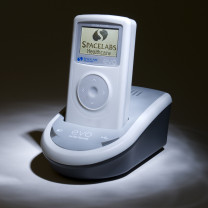Spacelabs 90227 User Manual Error Codes
PDF 2004 Club Car Service Manual.pdf PDF 2016 Honda Crf50 Owners Manual.pdf PDF Fiat Multipla Service Manual.pdf PDF Toyota Hilux Ln105 Repair Manual.pdf PDF Alexander Grinder Manual.pdf PDF Suzuki Dr 250 1987 Owners Manual.pdf PDF I Am Malala Discussion Guide.pdf PDF Power System Relaying Forth Edition Solution Manual.pdf. Lets give you a call back to help you buy the most suitable Medical Equipment & Device as per your requirement, We would not only help you choose the most suitable medical device but also help you find the right localised vendor to make your after sale requirements more readily available. Erbe VIO300S - Service Manual - Free download as PDF File (.pdf), Text File (.txt) or read online for free. The evolution of ABPM. OnTrak is the result of over 40 years of expertise in the research and development of ambulatory blood pressure. Spacelabs OnTrak Ambulatory Blood Pressure monitor has been comprehensively tested and validated 1 for adults and children, to give you reassurance, confidence and consistent results when assessing a patient’s hypertension.


“The real problem is not whether machines think but whether men do.” ~B.F. Skinner, Contingencies of Reinforcement, 1969
Sometimes, the more technology aims to help us, the more burden we take on to ensure it works. These days, automated blood pressure monitors are rapidly displacing mercury and aneroid sphygmomanometers in physician’s offices. As we move farther away from the 100 year old standard of listening for Korotkoff sounds to obtain a BP measurement, and towards the simple press of a button, there are a new set of usage factors that clinicians must remember when encountering problems.
Below is a list of the Top 5 reasons a clinician would encounter an error code when attempting to take an automated BP.
1. Stop moving!
Most automated BP monitors use a technique called oscillometry to evaluate the pressure pulses of your brachial artery and determine your systolic and diastolic blood pressure values. Since any movement of the cuff can result in drastic fluctuations of the pressure measured, this can cause serious distortion to the signal it is detecting. Unless the monitor has specific motion tolerance performance capabilities, this will often result in an error code or dramatically lengthened measurement times.
2. Wrap the cuff correctly
In most clinical environments where the patient volume can be overwhelming to work through, clinicians can sometimes forget how critical it is to choose and wrap a blood pressure cuff correctly. It was important with the old manual method of taking BP, it’s even more important now with automated monitors since the cuff is the sensor. Making sure the correct cuff size is chosen for the patient’s arm circumference, making sure the artery (ART) marker is aligned over the patient’s brachial artery and making sure the cuff is wrapped snugly are all critical to getting a reliable and accurate BP measurement from an automated device.
Microsoft visio 2013 free download mac. 3. Check the air hose, connectors and cuff
Automated monitors that meet the regulatory and safety requirements of clinical grade medical devices must constantly check for air leaks and blockage. If you are experiencing error codes during the early stages of an attempted BP measurement, it is most likely due to a blocked hose or a leak in the hose, connector or cuff. Check for any leaks by listening closely to the hose, connector and cuffs and also make sure you, or the patient, are not stepping on the hose!
4. Check arm position
It has always been important to make sure the patient is sitting in the proper position for a BP measurement. This means holding the upper arm at heart level. With automated monitors, it is also important to make sure the patient is not holding their cuffed arm too close to their side. By compressing the cuff between the patient’s arm and body, this will likely affect the pressure signals in the cuff creating “noise” signals that can block the pressure pulses of interest from the brachial artery. Again, it’s important to remember the cuff is the sensor, so be sure it is isolated from any interference.
5. Check batteries
Seems obvious and simple enough. If the low battery indicator is on or cuff is not inflating, the batteries must need replacing. However, there can be occasions where the monitor may work fine on one size cuff, but repeatedly gives an error code on another size cuff. Because regulatory and safety requirements limit the amount of time an automated monitor can attempt a blood pressure reading, you will want to make sure you have enough battery power to inflate a larger size cuff quickly. If that particular patient also has a high systolic, it will take longer for the cuff to inflate to a pressure where it can begin the reading. This can result in a situation where a pump running on low batteries has plenty of time to inflate and provide a reading on a small cuff, however it takes too long to inflate a larger cuff, resulting in a time out error code.
As developers of automated non-invasive blood pressure devices and technology, we’ve seen issues like this for over 20 years. While all clinicians strive to focus on appropriate techniques and other critical factors for obtaining an accurate BP measurement, the reality is that in today’s busy clinical environment, we can often overlook some of the simpler things. We hope this brief guide serves as a quick reminder and we encourage you to print it out and keep it near each of your automated blood pressure monitors.
Spacelabs Abpm Error Codes
Like what you've read?
Spacelabs 90227 User Manual Error Codes Code
Subscribe today to get the latest insights from the BP Measurement Experts.



